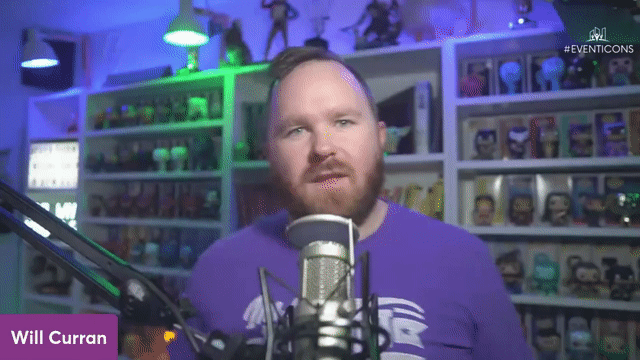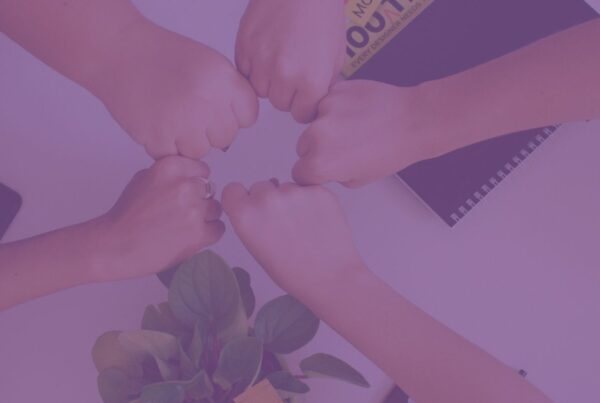Attendee arrival has changed in recent years. Before the pandemic, attendees would have booked hotels and made transportation arrangements in the days or weeks leading up to the event. With online events, they’ve cut that time down to a few minutes, and no one understands this better than today’s #EventIcons guest, Arianna Black.
Arianna has a long-standing relationship with events. Recently, that relationship has grown to focus on meaningful connections in virtual events. She says, “My current obsession is building spaces for authentic connections into large-scale digital-first engagements.” In this episode, Arianna will share what led her to events, her thoughts about digital attendee arrival, and some of her best tips for creating online experiences.
How Arianna Black Came to Events
In standard #EventIcons procedure, Will starts today’s conversation by asking Arianna to share what led her to the events industry.
“I’ve been in events since university. I used to be a spin instructor; I think group exercise is an interesting microcosm of what an event can be,” says Arianna. “I would teach spin classes that became spin classes followed by a run. Then I would start bringing in food, disco balls, and lighting. I developed a fitness following, and I have always loved group fitness because I think we learn in community. That’s where it started.”
“I went from there to working in private events,” she continues. “Then, I joined a small catering company, just as they were scaling up, and went into vending management as the primary caterer and event planner. I was working with clients trying to plan the experience they wanted to create.”
After spending an immense amount of time traveling and in hotels, Arianna took a break. “I wound up taking a role with Women in Product. Originally, I started as a physical conference producer, and then 2020 happened. I went to as many events online as possible, trying to understand what was missing and what we could create that would be different. In the process, I found that I was hesitant to reach out and wasn’t making the connections I wanted to make.”
“Through a series of events, I wound up living in Hawaii. It has led me to be more vocal and to meet new people on places like LinkedIn. If I want to have the quality of conversation that I want to have, I need to start sparking those conversations. I’ve become my own best digital attendee,” concludes Arianna.
Digital Attendee Arrival is Drastically Different
Diving right into digital arrival, Arianna takes us to the next topic by sharing what ignited her obsession with attendee arrival. “In 2019, we had an event app,” she says. “A week before the event, I had a third of the crowd thinking about the event. In 2020, I expected that I could get people thinking about my event beforehand.
“I found that people don’t think about arriving at my event until 10 minutes before the hour,” she continues. “Slack sends them a notification 10 minutes before the event, they get another cup of coffee, and I have people for maybe 5 minutes max before the event. I’ve completely surrendered to understanding that I need to plan my entire event differently based on this compressed arrival period. It became a different curve of how attendees need to arrive.”
Will feels that the beginning of an event can have a massive impact on an event’s engagement. “Do you think the first 30 minutes of an event are the most important thing to driving engagement for however long your virtual event is?”
In short, Arianna’s answer is yes. But she begins by comparing virtual events to physical events. “At a physical event, you have the opportunity for a ‘wow’ moment, at the beginning, peak individual experience in the middle, and a moment, in the end, to send them off with how you want them to remember your event.”
She continues: “I found that if I want that peak wow moment, I can’t program it into the beginning of my event. A lot of times, it’s a morning keynote. I’ve learned I need to drive so much excitement before that morning keynote that I can onboard everyone get them in the right room, and have them in the right headspace. I found that I have to give people the conversations they want to have so badly that they’ll start logging on at 8 am. Then by 9 am, when I want that wow moment, I’m past all the orientation moments.”
Tips on Creating a Great Digital Attendee Arrival
Eager to hear more of what Arianna has to share, Will asks about other advice, recommendations, and tips she has for us. “What other successful tips have you seen for the arrival period?”
Treat Chats Like a Digital Hallway
In 2019, Arianna found that attendees will ask questions everywhere. She never wants an attendee to ask a question and feel like they’re in the wrong space to be heard. “That’s informed how I think about chat,” she says. “My feeling is that a chat feed with a whole bunch of unanswered questions feels like a YouTube chat feed gone wrong. These are hallways. You would never hold an event and not have signage and human people waving. Staffing chats has been mission-critical for me.”
Will wants to know more about designing the chat monitor experience. “How do you pick and choose where people go?” he asks.
“We used to have a volunteer coordinator,” says Arianna. She emphasizes that her approach engages digital spaces like physical space. “The coordinator would assign people to certain hallways. We have scheduled assignments that are time-based and location-based. We also run training sessions with the monitors and have a slack channel so they can talk off the platform if we’re experiencing any issues.”
Design for Introverts
As a self-described introvert, Arianna understands the disconnect introverts can experience when events people don’t design events with introverts in mind. Here are her thoughts on designing an experience for introverts.
“I think we have to be mindful of making the information about how to engage and what to expect really, really clear,” she explains. “I won’t just ask a question in a chat if I’m concerned that question might be answered elsewhere. For me, chat is networking. I want to say something insightful in chat.”
“For me, these are very physical spaces,” continues Arianna. “I wouldn’t walk into a ballroom for registration and scream, ‘Where’s the water station?’ But that’s the nature of internet behavior. For those of us who are either more mindful of our internet behavior or do not want to look bad in chat, make that information as accessible as you can for us.”
“It’s not necessarily that introverts don’t like to interact; it’s about knowing what to expect,” adds Will. “The more you can set your expectations the right way, the less energy-draining it is for you to be whiplashed around the social expectations of the event.”
Arianna agrees. She recommends choosing a platform conducive to multiple modes of behavior, so everyone can engage in a way that feels good to them. “The platform I chose is one where you can listen, watch, and engage in chat, or jump up on the feed and be a part of the video conversation. I’ve had friends send me a picture with a headset on, driving slides in one hand, and with a kid in the other arm. I didn’t want people to feel that they couldn’t engage in a way that felt good for them.”
Conclusive Thoughts
As Will and Arianna wrap up this episode of #EventIcons, Will wants to know, “What are your favorite resources?”
“I have to talk about Priya Parker. I love a good physical book. Priya Parker wrote The Art of Gathering: How We Meet and Why It matters. She posits interesting ideas about why we gather and how to facilitate that. I think I’m on my third read-through. Some of the ways she’ll talk about a dinner party are then sparking ideas, for me, about a breakout session.”
Her number one tip for listeners today is, “Plan your own event. It’s easy to be inspired by what other people are doing. If you’re worried about what other people are doing, you’re not focusing on the unique value that your event brings to your audience.”
We hope you enjoyed today’s episode with Arianna Black as much as we did. We’ll catch you here next time with another iconic guest!







